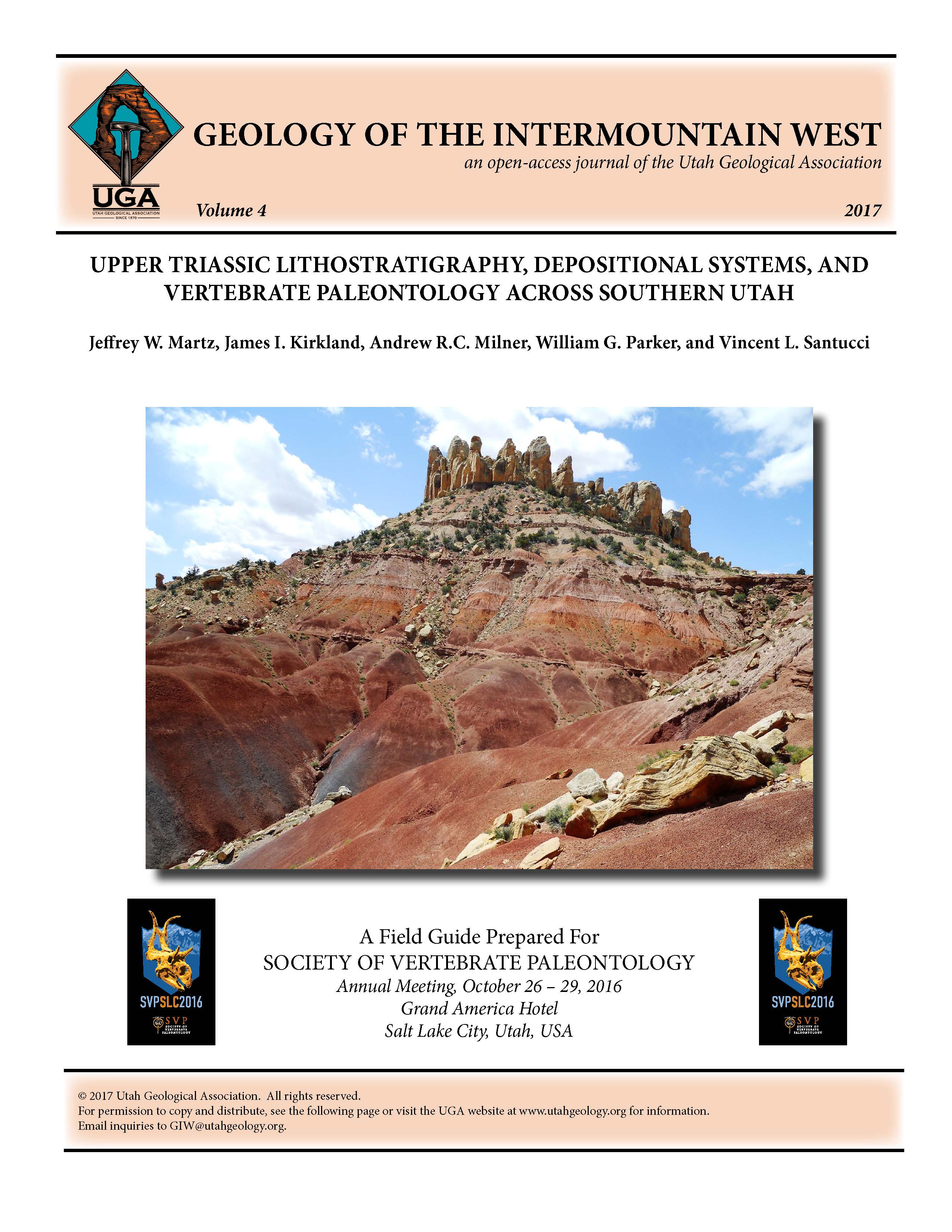Upper Triassic lithostratigraphy, depositional systems, and vertebrate paleontology across southern Utah
Abstract
The Chinle Formation and the lower part of the overlying Wingate Sandstone and Moenave Formation were deposited in fluvial, lacustrine, paludal, and eolian environments during the Norian and Rhaetian stages of the Late Triassic (~230 to 201.3 Ma), during which time the climate shifted from subtropical to increasingly arid. In southern Utah, the Shinarump Member was largely confined to pre-Chinle paleovalleys and usually overprinted by mottled strata. From southeastern to southwestern Utah, the lower members of the Chinle Formation (Cameron Member and correlative Monitor Butte Member) thicken dramatically whereas the upper members of the Chinle Formation (the Moss Back, Petrified Forest, Owl Rock, and Church Rock Members) become erosionally truncated; south of Moab, the Kane Springs beds are laterally correlative with the Owl Rock Member and uppermost Petrified Forest Member. Prior to the erosional truncation of the upper members, the Chinle Formation was probably thickest in a southeast to northwest trend between Petrified Forest National Park and the Zion National Park, and thinned to the northeast due to the lower Chinle Formation lensing out against the flanks of the Ancestral Rocky Mountains, where the thickness of the Chinle is largely controlled by syndepositional salt tectonism. The Gartra and Stanaker Members of the Ankareh Formation are poorly understood Chinle Formation correlatives north of the San Rafael Swell. Osteichthyan fish, metoposaurid temnospondyls, phytosaurids, and crocodylomorphs are known throughout the Chinle Formation, although most remains are fragmentary. In the Cameron and Monitor Butte Members, metoposaurids are abundant and non-pseudopalatine phytosaurs are known, as is excellent material of the paracrocodylomorph Poposaurus; fragmentary specimens of the aetosaurs Calyptosuchus, Desmatosuchus, and indeterminate paratypothoracisins were probably also recovered from these beds. Osteichthyans, pseudopalatine phytosaurs, and the aetosaur Typothorax are especially abundant in the Kane Springs beds and Church Rock Member of Lisbon Valley, and Typothorax is also known from the Petrified Forest Member in Capitol Reef National Park. Procolophonids, doswelliids, and dinosaurs are known but extremely rare in the Chinle Formation of Utah. Body fossils and tracks of osteichthyans, therapsids, crocodylomorphs, and theropods are well known from the lowermost Wingate Sandstone and Moenave Formation, especially from the St. George Dinosaur Discovery Site at Johnson Farm.

Copyright (c) 2017 Utah Geological Association

This work is licensed under a Creative Commons Attribution 4.0 International License.




